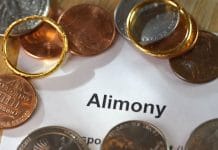Imagine signing your mortgage papers and realizing you just saved yourself $100-300 every month for years to come. That’s not fantasy—it’s the reality for homebuyers who secure a no PMI mortgage. Whether you’re a first-time homebuyer or looking to refinance, understanding how to avoid Private Mortgage Insurance could be the financial game-changer you’ve been searching for.
What Exactly Is a No PMI Mortgage?
A no PMI mortgage is exactly what it sounds like—a home loan that doesn’t require you to pay Private Mortgage Insurance. Typically, when you make a down payment of less than 20% on a conventional mortgage, lenders require PMI to protect themselves if you default. This insurance doesn’t protect you at all; it protects the lender, yet you’re the one paying for it.
“The average PMI cost ranges between 0.5% and 1.5% of your loan amount annually,” explains housing analyst Mark Thompson. “On a $300,000 mortgage, that’s $1,500 to $4,500 per year—money that’s not building equity in your home.”
Who Should Consider a No PMI Mortgage?
You might be an ideal candidate for a no PMI mortgage if:
- You have a strong credit score (usually 720+)
- You maintain a stable, verifiable income
- You’ve saved enough for a 20% down payment (or can use one of the alternative strategies we’ll discuss)
- You’re financially disciplined and have a history of responsible debt management
Sarah from Colorado shares: “When I bought my first house, I didn’t know about PMI until closing. I ended up paying an extra $180 monthly for three years before I could remove it. With my second home, I made sure to get a no PMI loan—that’s $6,480 saved over those same three years!”
How Eliminating PMI Transforms Your Financial Picture
The impact of avoiding PMI extends far beyond your monthly payment:
Immediate Benefits
- Lower Monthly Payments: Without that 0.5-1.5% of your loan amount going to insurance, your monthly housing costs decrease significantly.
- Faster Equity Building: Every dollar not spent on PMI can go toward your principal balance, helping you build equity faster.
- Potentially Better Interest Rates: Lenders often view borrowers who can make larger down payments as lower risk, qualifying you for more favorable interest rates.
Long-Term Advantages
The savings compound over time. Let’s break it down with a table:
| Loan Amount | Average Monthly PMI | 5-Year Cost | 10-Year Cost |
| $200,000 | $125 | $7,500 | $15,000 |
| $300,000 | $187.50 | $11,250 | $22,500 |
| $400,000 | $250 | $15,000 | $30,000 |
| $500,000 | $312.50 | $18,750 | $37,500 |
Based on average PMI rates of 0.75% annually
5 Ways to Get a Mortgage Without PMI
1. Make a 20% Down Payment
The traditional approach remains the most straightforward: save until you have 20% of the home’s purchase price for your down payment. On a $300,000 home, that’s $60,000.
Pro tip: Many homebuyers use “windfall” money like tax refunds, work bonuses, or inheritance to boost their down payment funds.
2. Consider an 80-10-10 Loan (Piggyback Mortgage)
This creative financing structure involves:
- A primary mortgage for 80% of the home’s value
- A second loan (often a HELOC) for 10%
- Your down payment covers the remaining 10%
The combined loans reach 90% of the home’s value, but since your primary mortgage is at 80%, you avoid PMI.
3. Explore Lender-Paid PMI Options
Some lenders offer programs where they pay the PMI in exchange for a slightly higher interest rate. This can be beneficial if you:
- Plan to stay at home for a shorter period
- Expect to benefit from the mortgage interest tax deduction
- Prefer a lower upfront cost
4. Look Into Professional Discount Programs
Certain professions—including doctors, lawyers, and teachers—may qualify for specialized mortgage programs that waive PMI requirements even with lower down payments.
“I was shocked to discover my medical residency qualified me for a physician’s mortgage with no PMI despite only putting 10% down,” says Dr. James Wilson. “The savings helped furnish our new home.”
5. VA Loans for Military Members and Veterans
If you’ve served in the military, VA loans offer one of the best no-PMI options available with benefits including:
- Zero down payment requirements
- No PMI
- Competitive interest rates
- More flexible credit requirements
The Trade-offs: Understanding the Potential Drawbacks
Before jumping into a no PMI mortgage, consider these potential disadvantages:
Higher Upfront Costs
Saving for a 20% down payment can take years and might delay your homeownership dreams. The national median home price now exceeds $400,000, making a 20% down payment $80,000 or more in many markets.
Stricter Qualification Requirements
No PMI mortgage options often come with more rigorous approval criteria, including:
- Higher credit score thresholds
- Lower debt-to-income ratio requirements
- More extensive documentation of financial history
Opportunity Cost Considerations
Financial advisors like Janet Rivera suggest weighing your options: “Sometimes it makes more sense to buy sooner with PMI if home prices in your area are rising faster than you can save. The appreciation could outweigh the PMI costs.”
How to Convert Your Existing Mortgage to a No PMI Loan
Already have a mortgage with PMI? You’re not stuck forever:
- Track Your Loan-to-Value Ratio: Most lenders automatically remove PMI when your loan balance reaches 78% of the original home value.
- Request Early Cancellation: Once you reach 80% LTV, you can request PMI cancellation. This requires:
- A good payment history
- No additional liens on the property
- Possibly a new appraisal (at your expense) if your home’s value has increased
- Consider Refinancing: If interest rates have dropped or your home has appreciated significantly, refinancing into a new loan without PMI might make financial sense.
Real-World Success Story: The Johnson Family’s PMI-Free Journey
When the Johnsons were shopping for their Seattle home in 2022, housing prices were skyrocketing, and they had only saved 15% for a down payment. Rather than waiting years to save the additional 5%, they worked with a mortgage broker who suggested an 80-10-10 structure.
“We took a second mortgage at a slightly higher rate for 10% of the purchase price,” explains Michael Johnson. “Even with two mortgage payments, we’re saving about $200 monthly compared to what we would have paid with PMI. After two years, we’re planning to refinance the second mortgage once we’ve built more equity.”
Finding Lenders That Specialize in No PMI Mortgages
Not all lenders offer the same no PMI options. Consider these approaches to find the right partner:
- Credit Unions: Many offer member-exclusive no PMI programs with more flexible terms than traditional banks
- Mortgage Brokers: These professionals work with multiple lenders and can identify specialized programs you might not find on your own
- Online Lenders: Digital-first mortgage companies often have innovative programs to eliminate or reduce PMI
- Regional Banks: Local institutions sometimes create no PMI products specifically designed for their communities
Always compare at least three different lenders to ensure you’re getting competitive terms.
Making the Decision: Is a No PMI Mortgage Right for You?
Consider these questions when deciding whether to pursue a no PMI mortgage:
- How long do you plan to stay at home?
- Is your financial situation stable and well-documented?
- Have you calculated both the monthly and lifetime costs of PMI versus the alternatives?
- Would the money for a larger down payment be better used for other financial goals?
- Have you explored all available first-time homebuyer programs in your area?
Remember that what works for one homeowner might not be ideal for another. Your financial situation, local housing market, and long-term goals should guide your decision.
The Bottom Line: A Strategic Approach to Homeownership
No PMI mortgages represent a strategic approach to homeownership that can save you thousands over the life of your loan. Whether through traditional 20% down payments, creative financing structures, or specialized professional programs, eliminating PMI redirects your hard-earned money from insurance premiums to building equity.
As with any major financial decision, consider consulting with a mortgage professional who can analyze your specific situation and recommend the best path forward. The right approach to your mortgage could mean the difference between just owning a home and building true wealth through homeownership.
Ready to explore no PMI mortgage options? Start by getting pre-qualified with multiple lenders to compare your options. Your future self—and wallet—will thank you.
What’s your experience with PMI? Have you successfully avoided it or removed it from your mortgage? Share your story in the comments below!

























